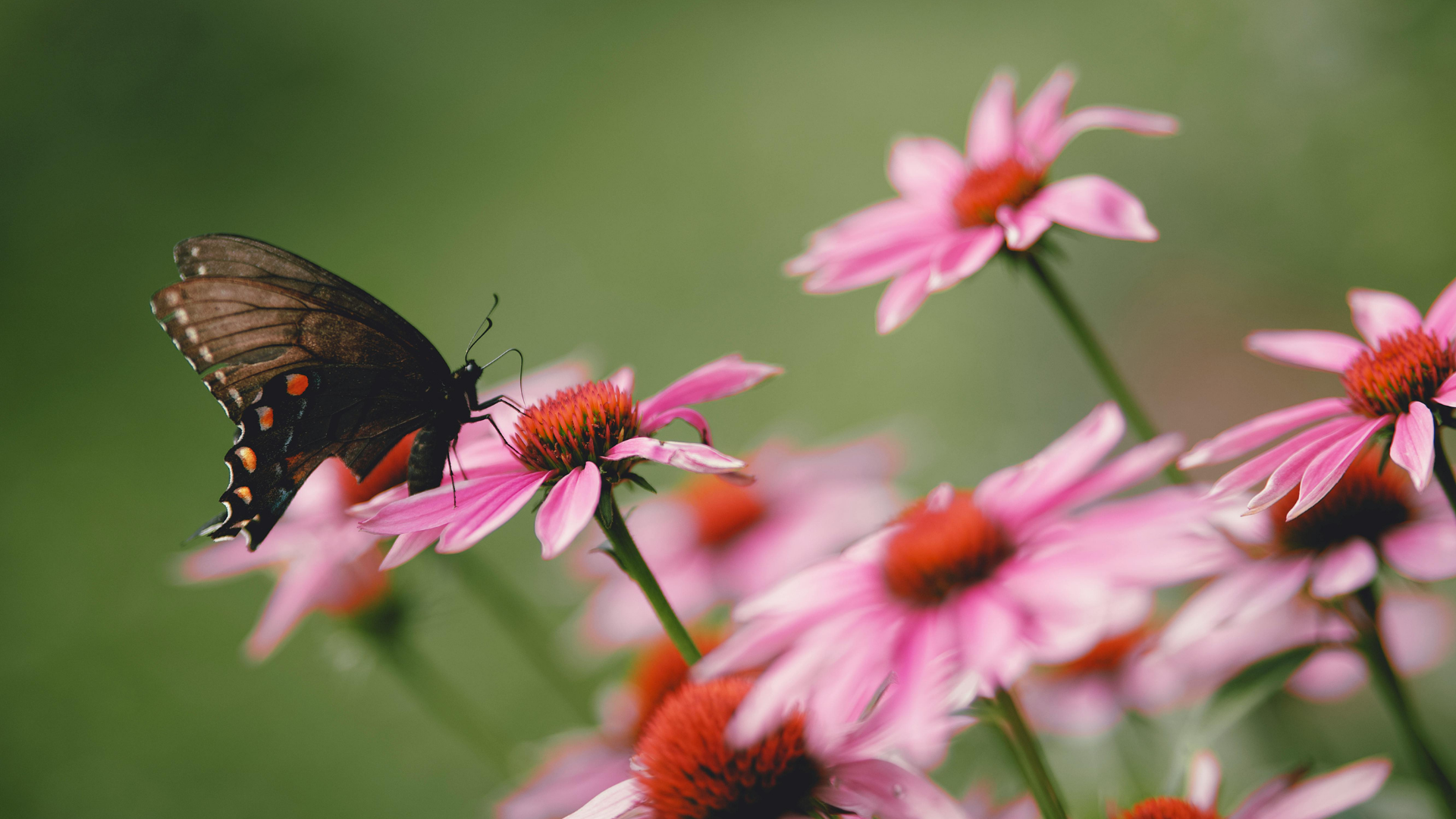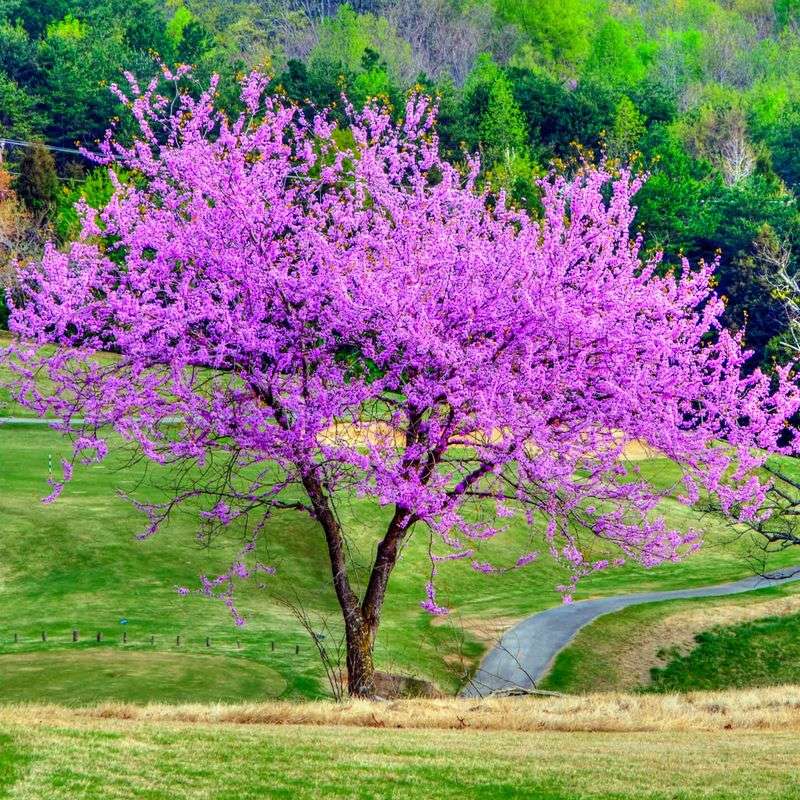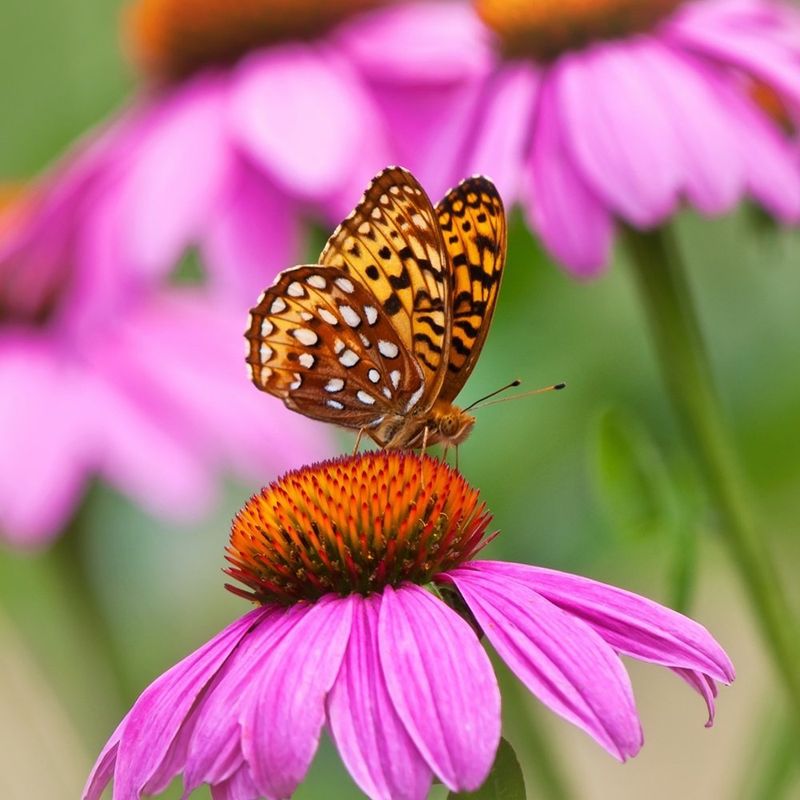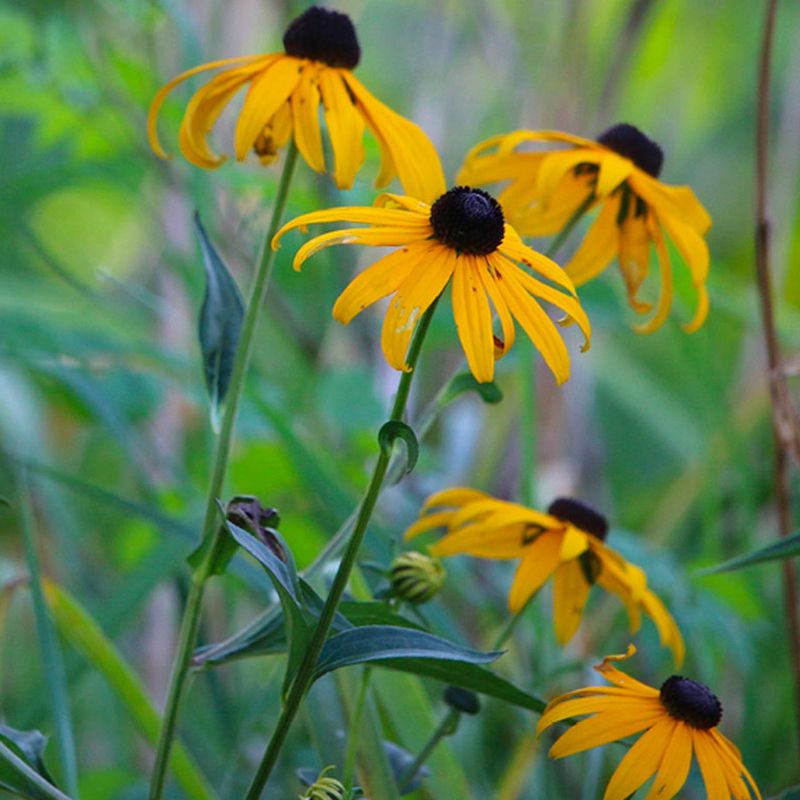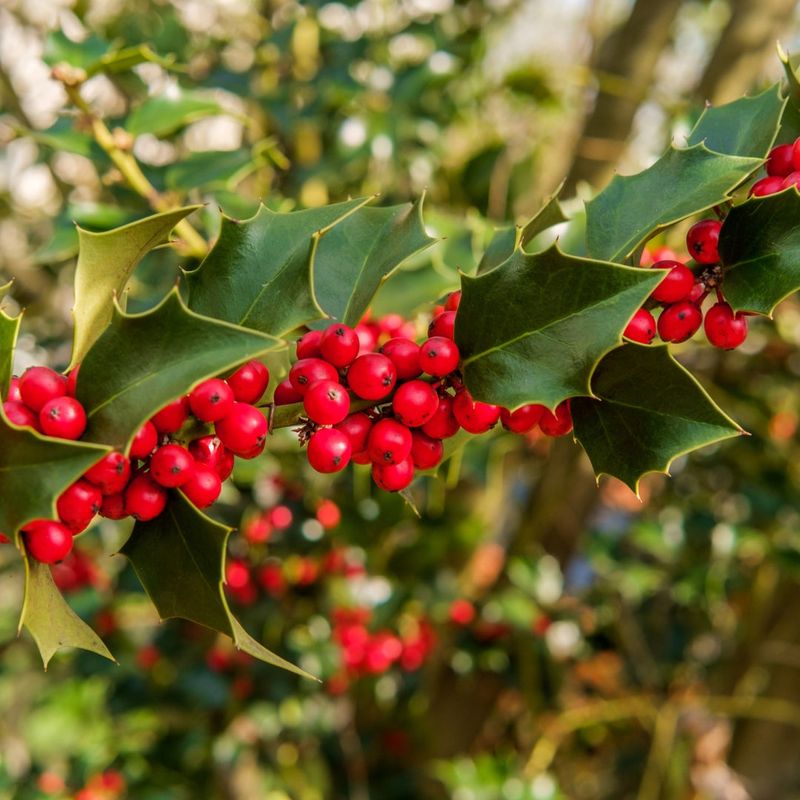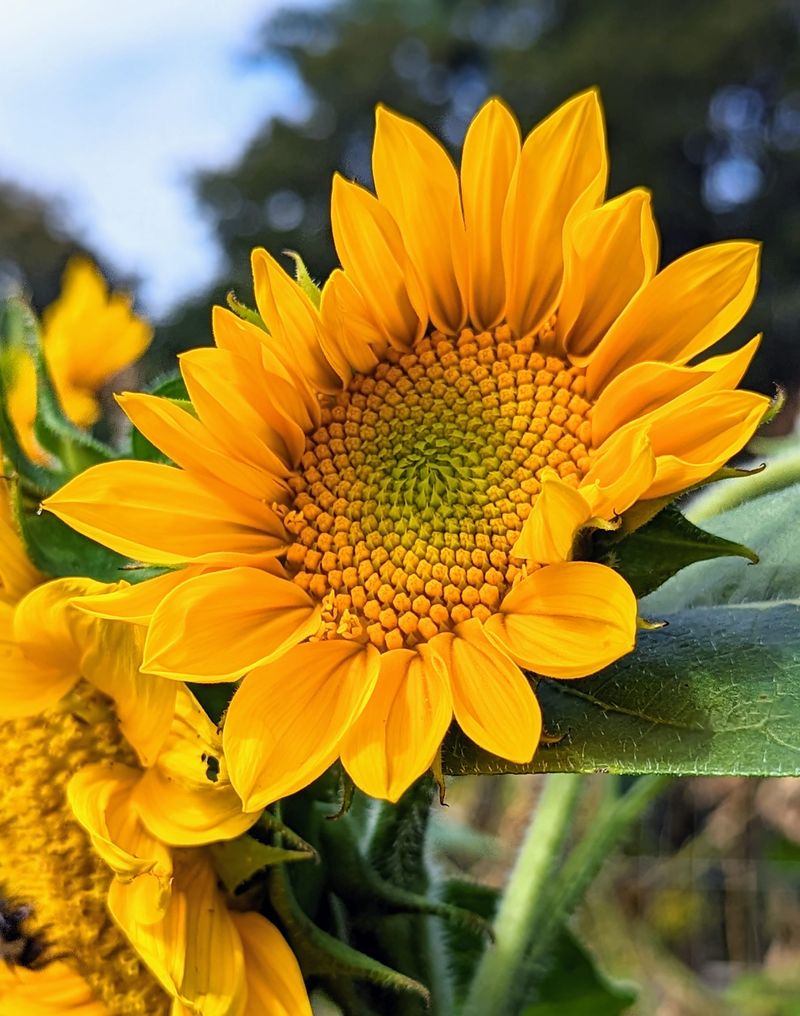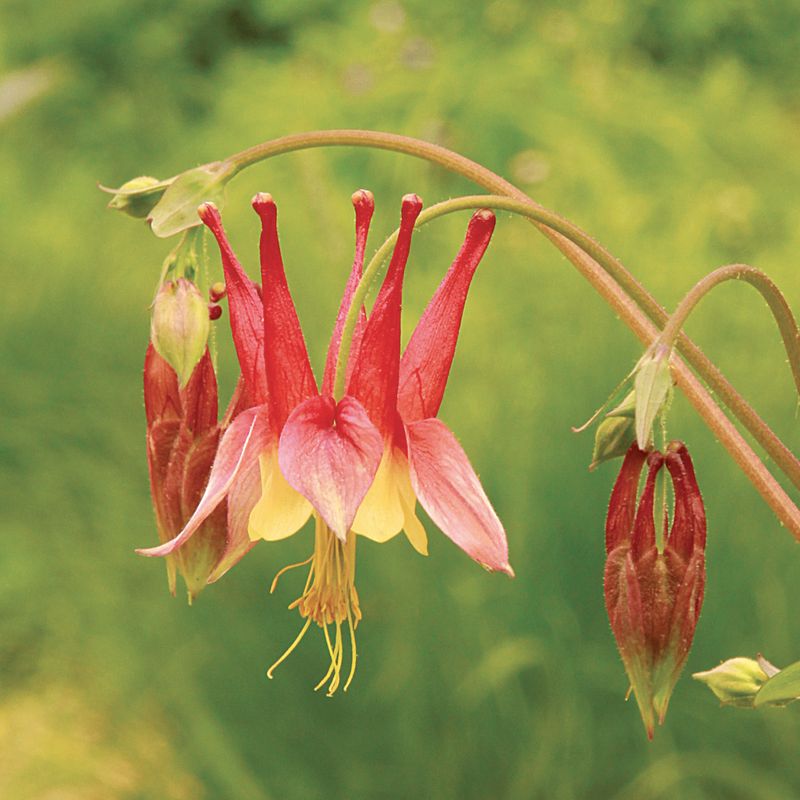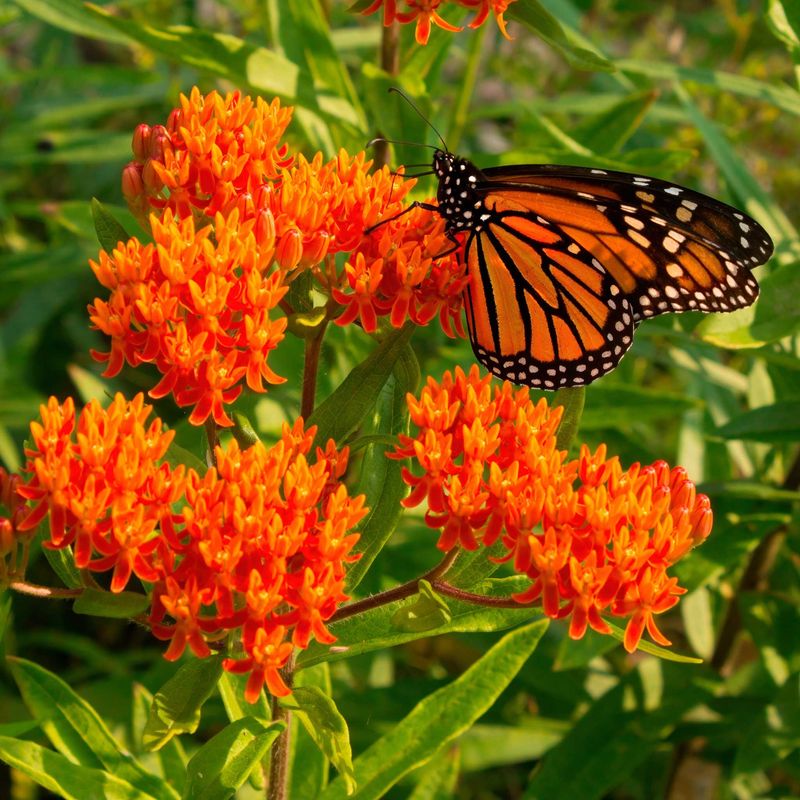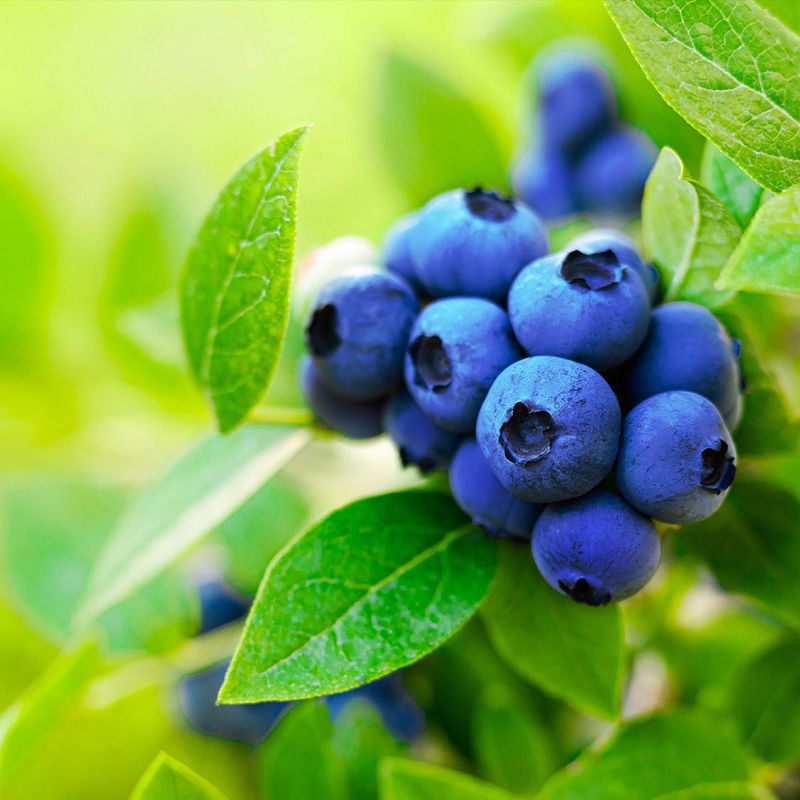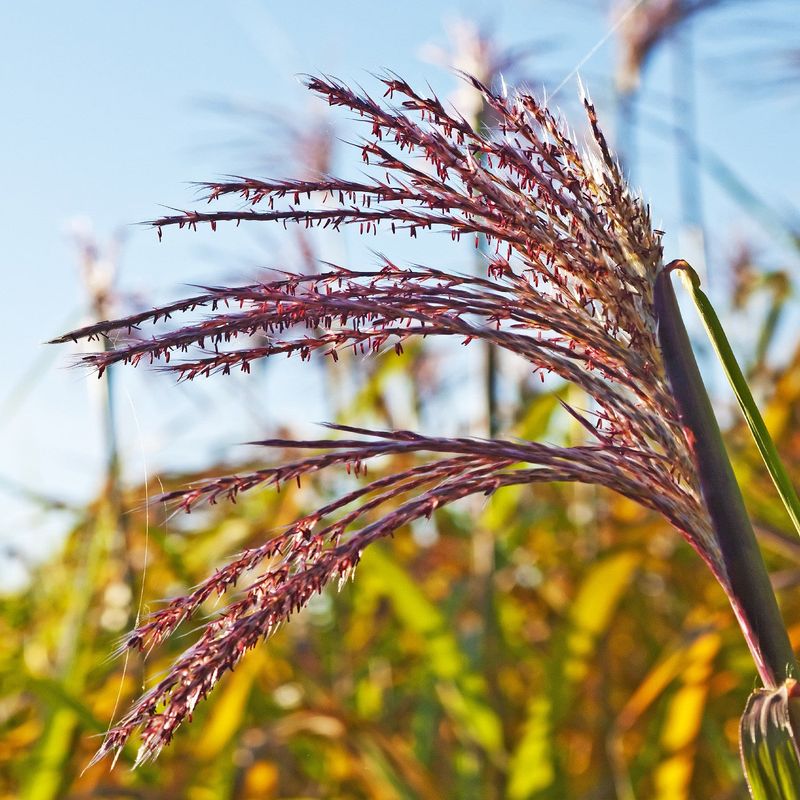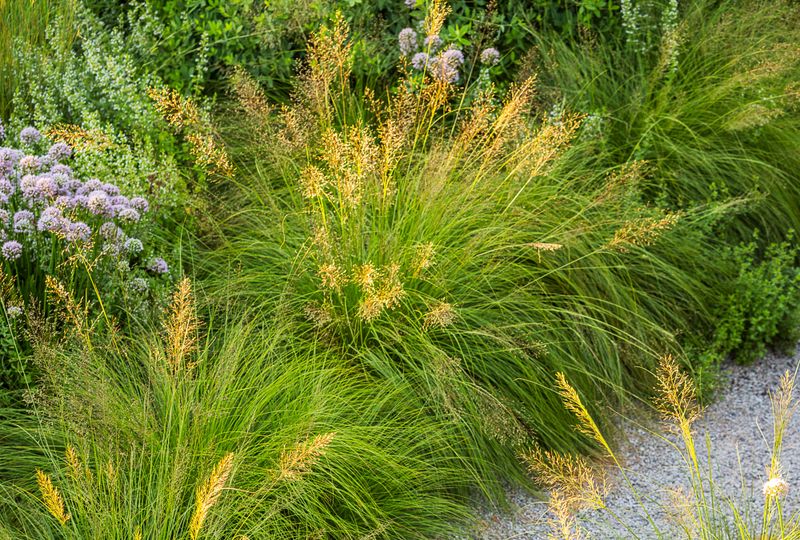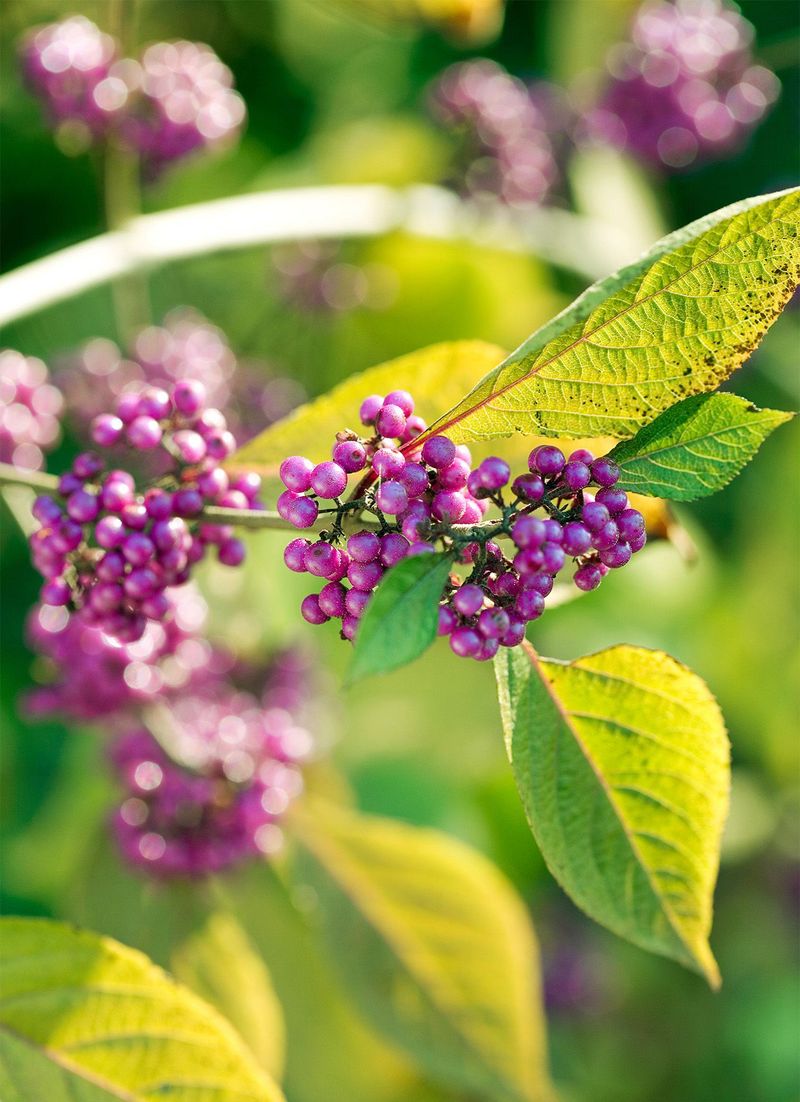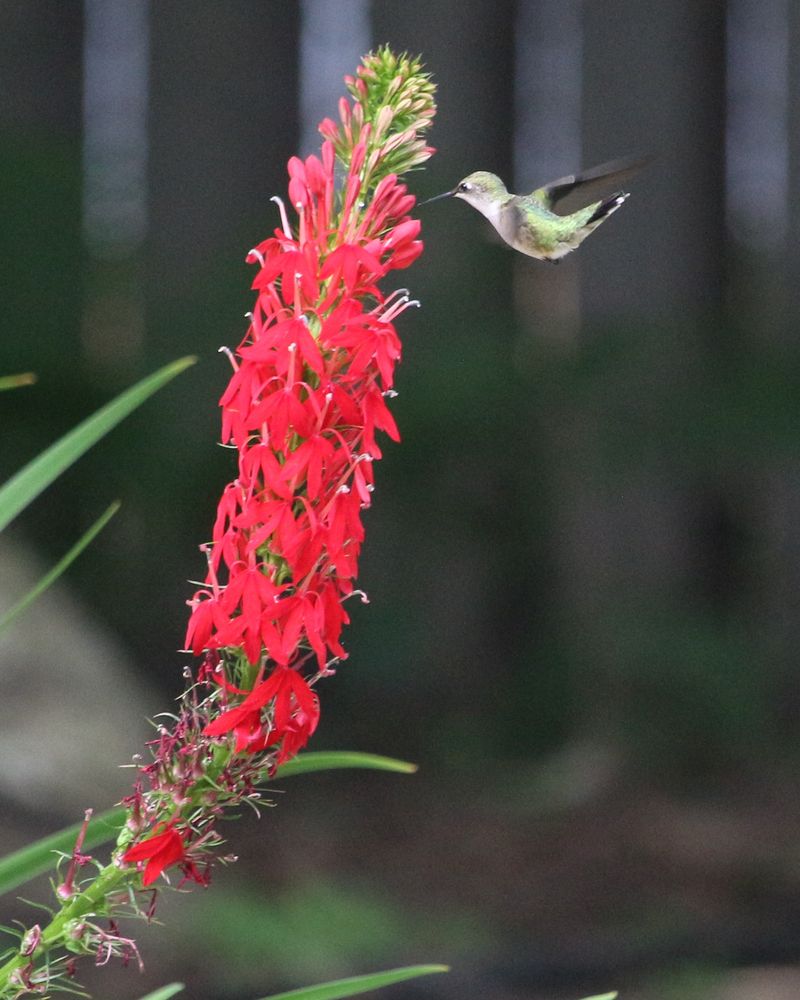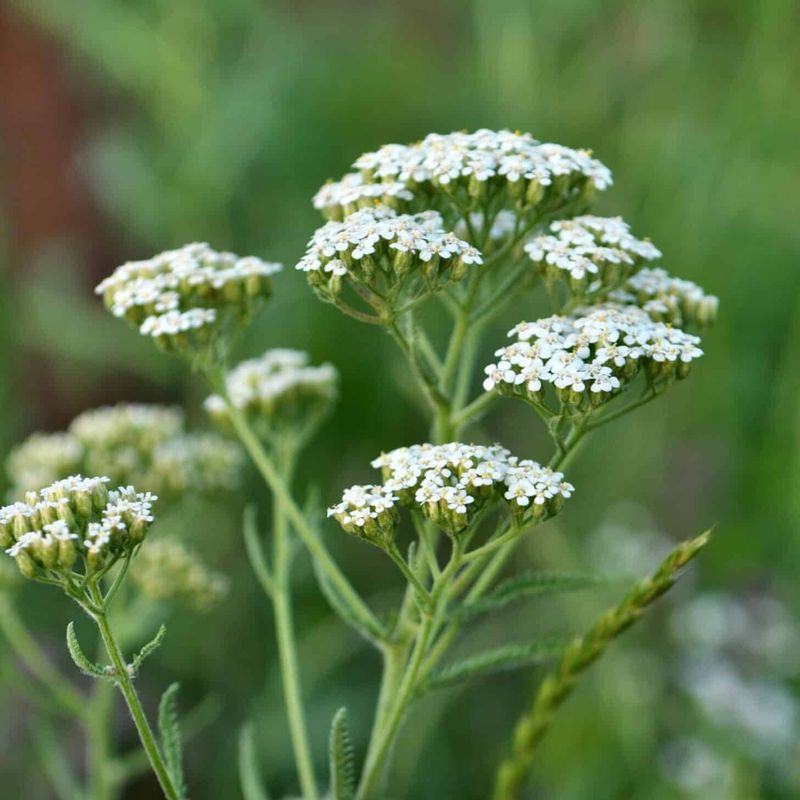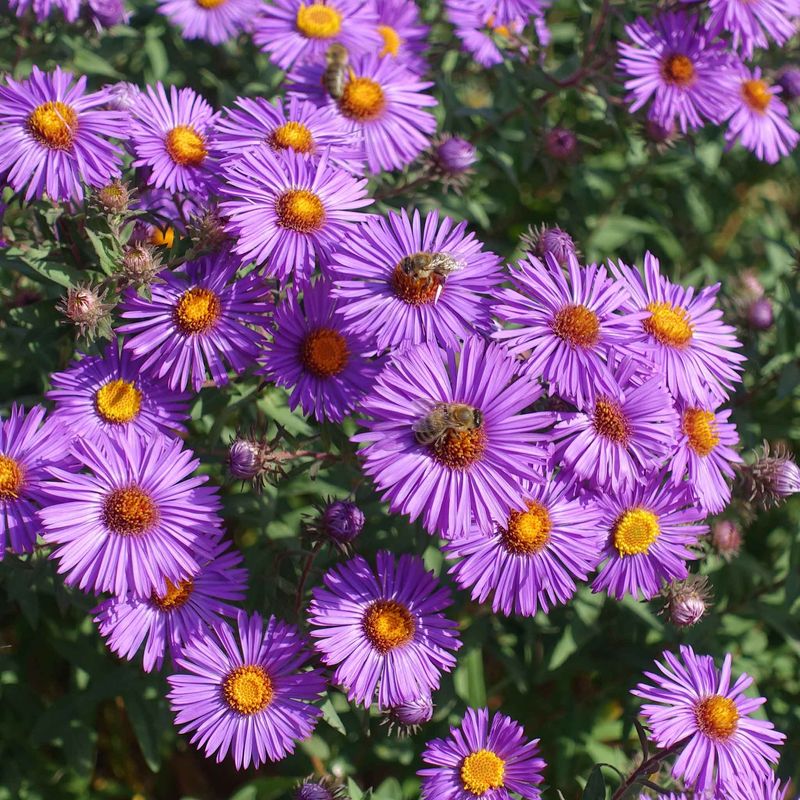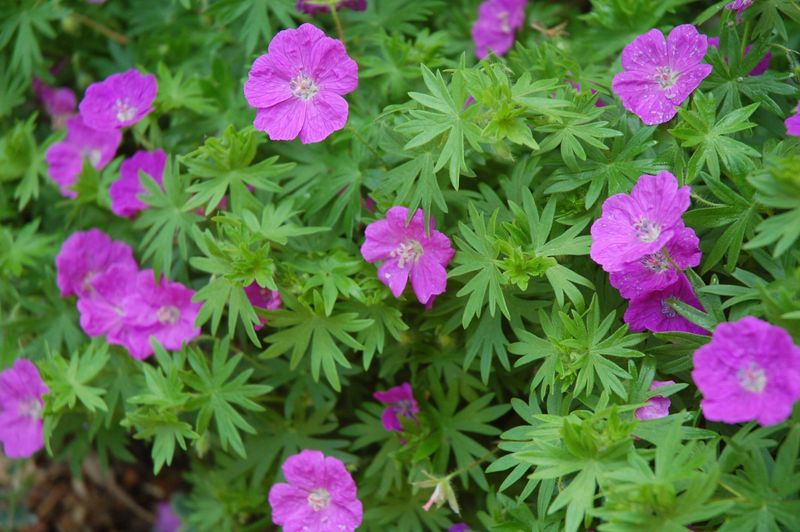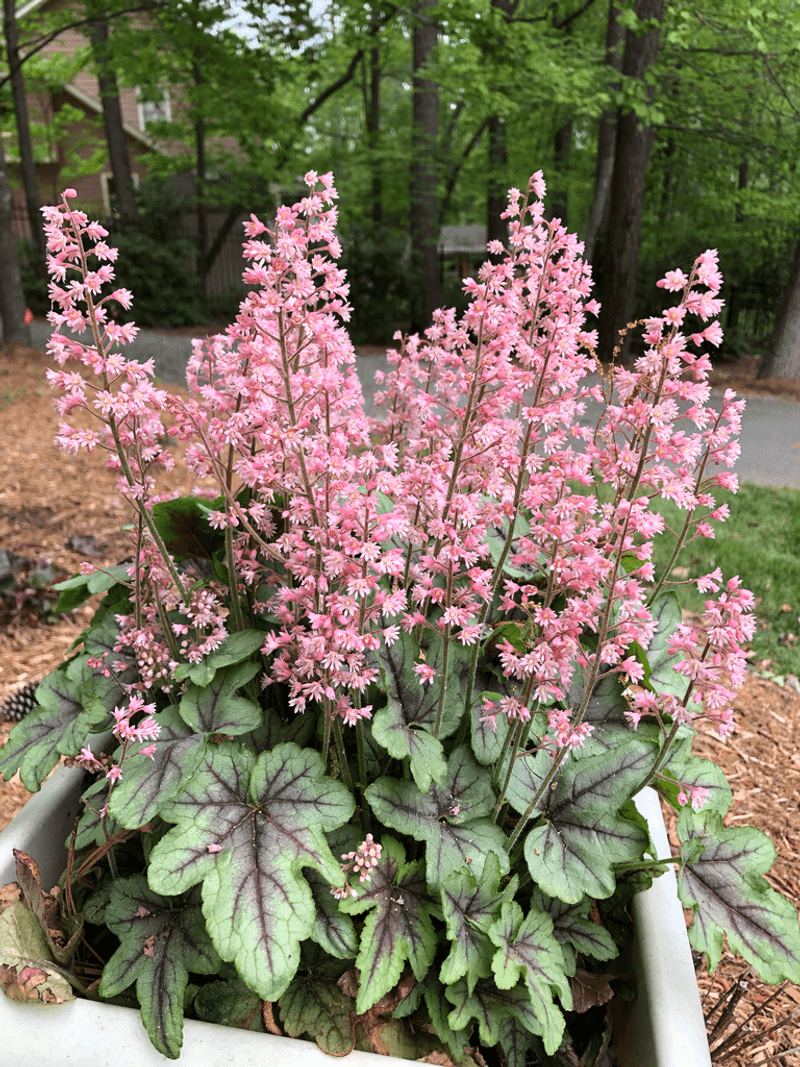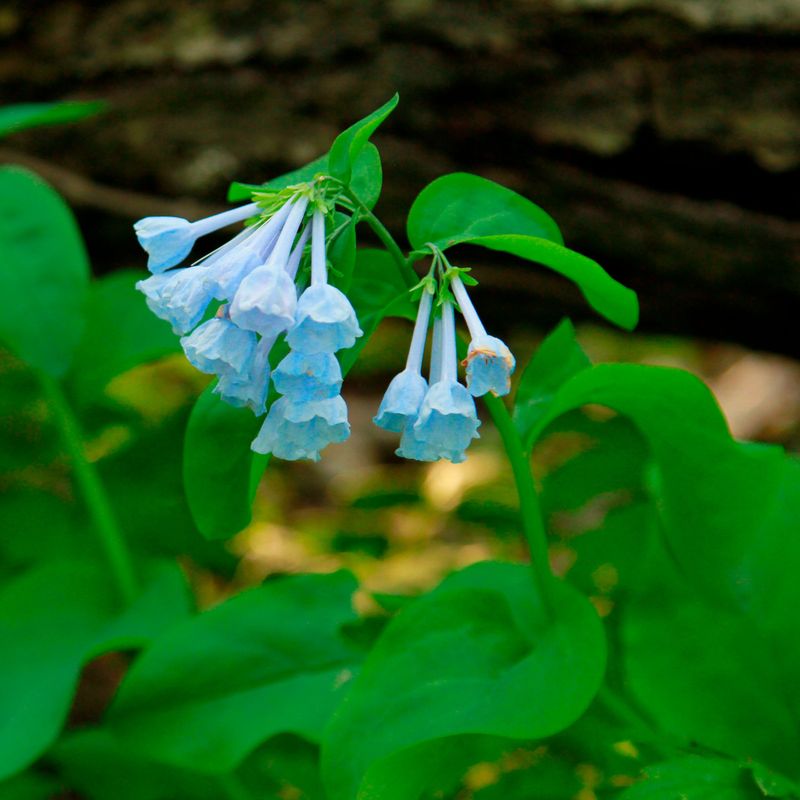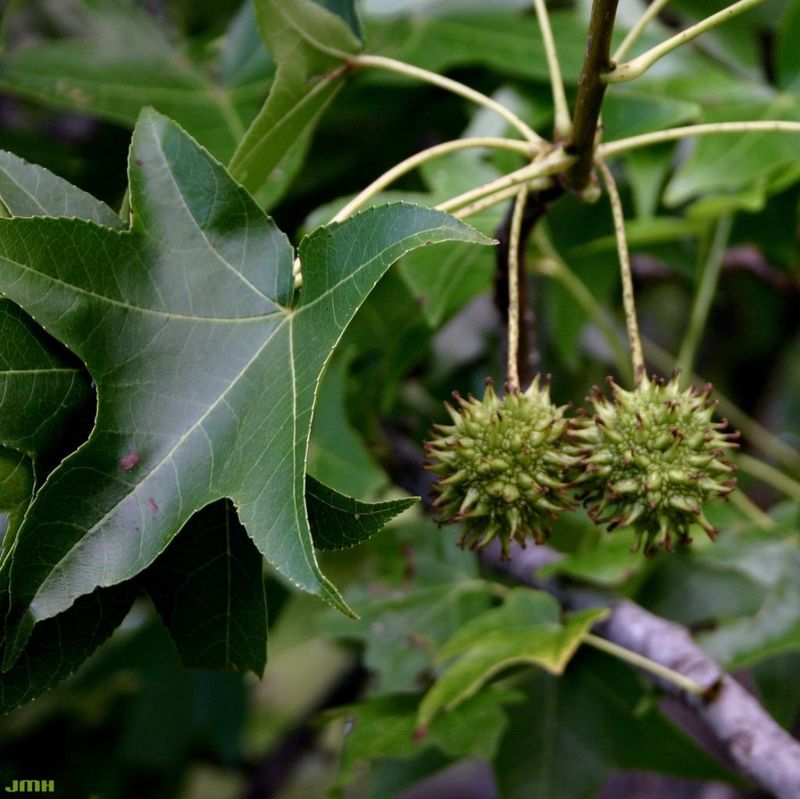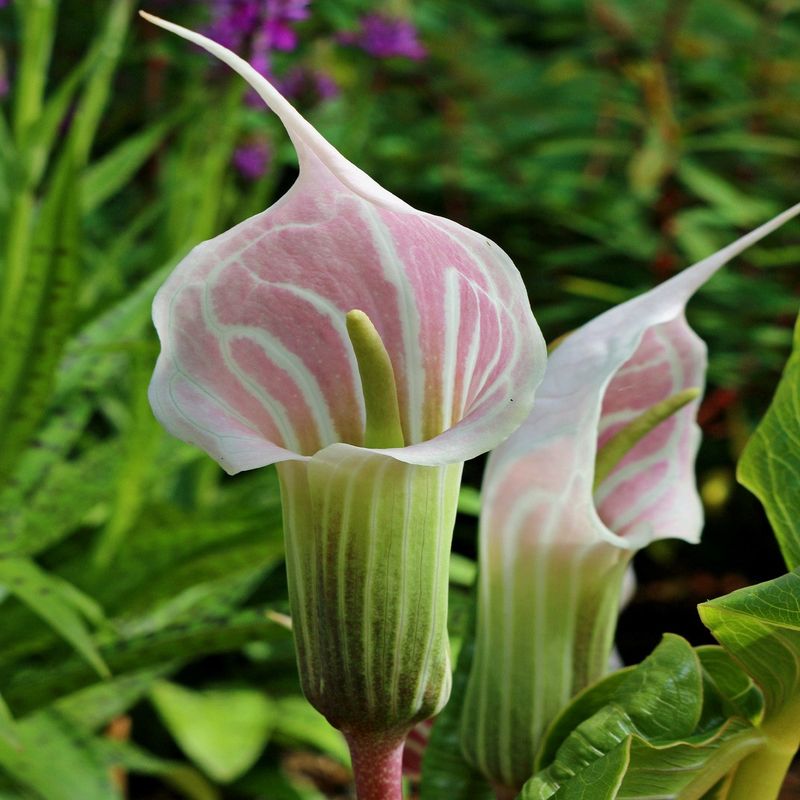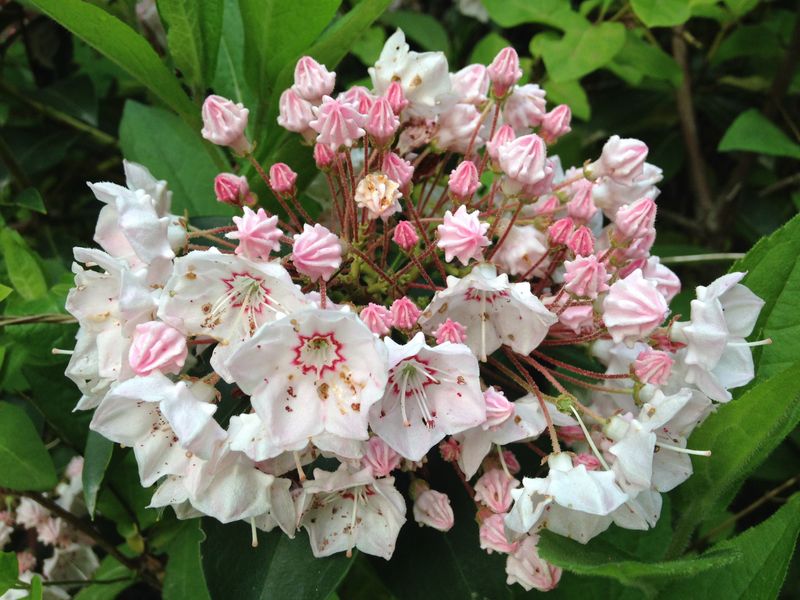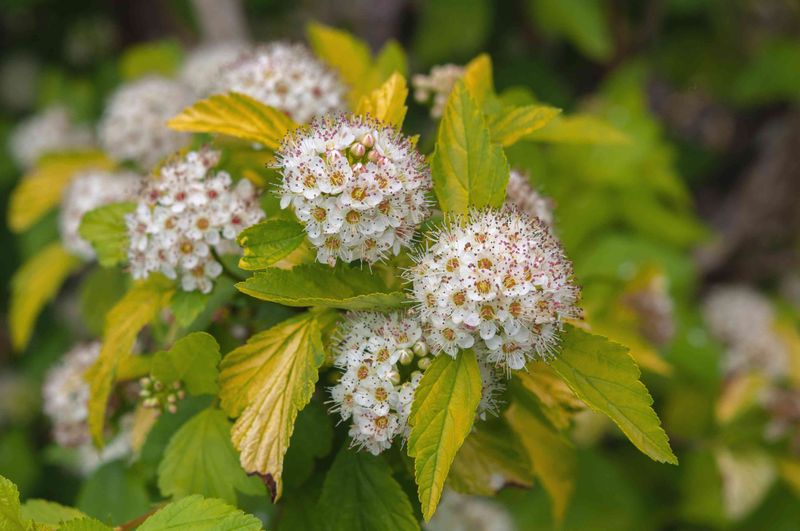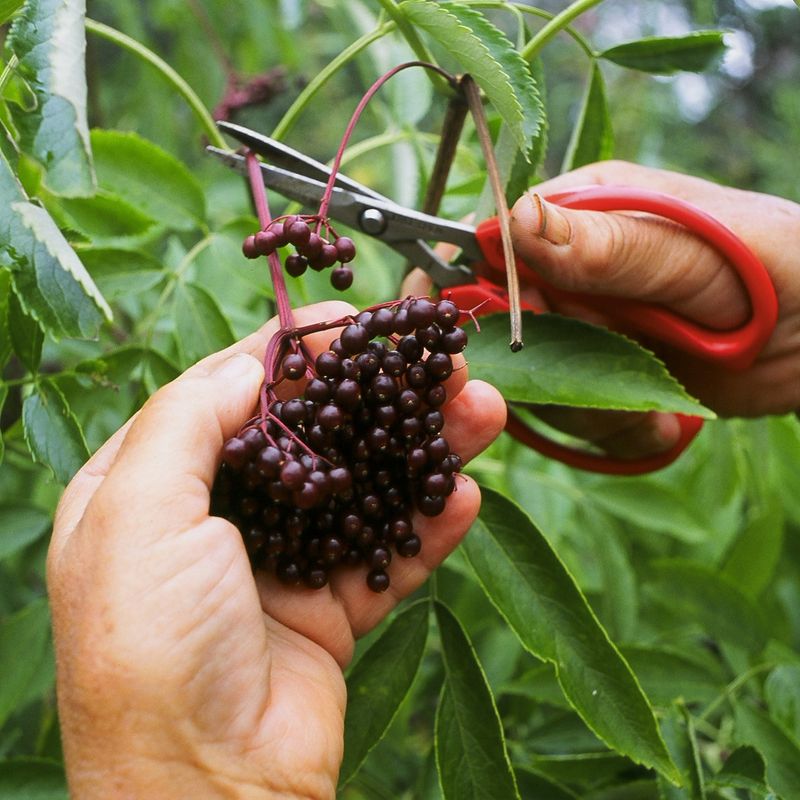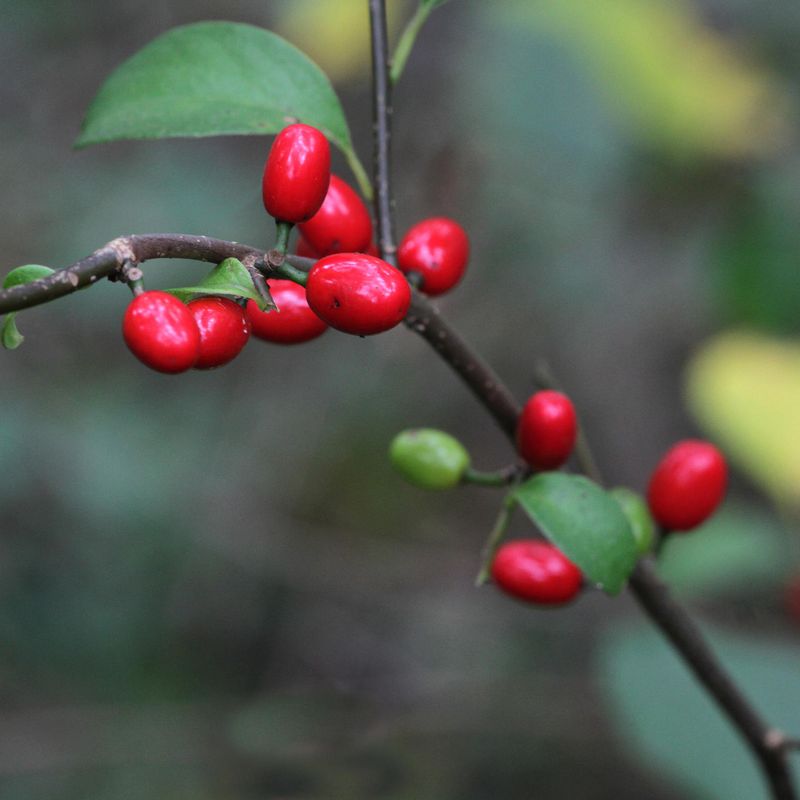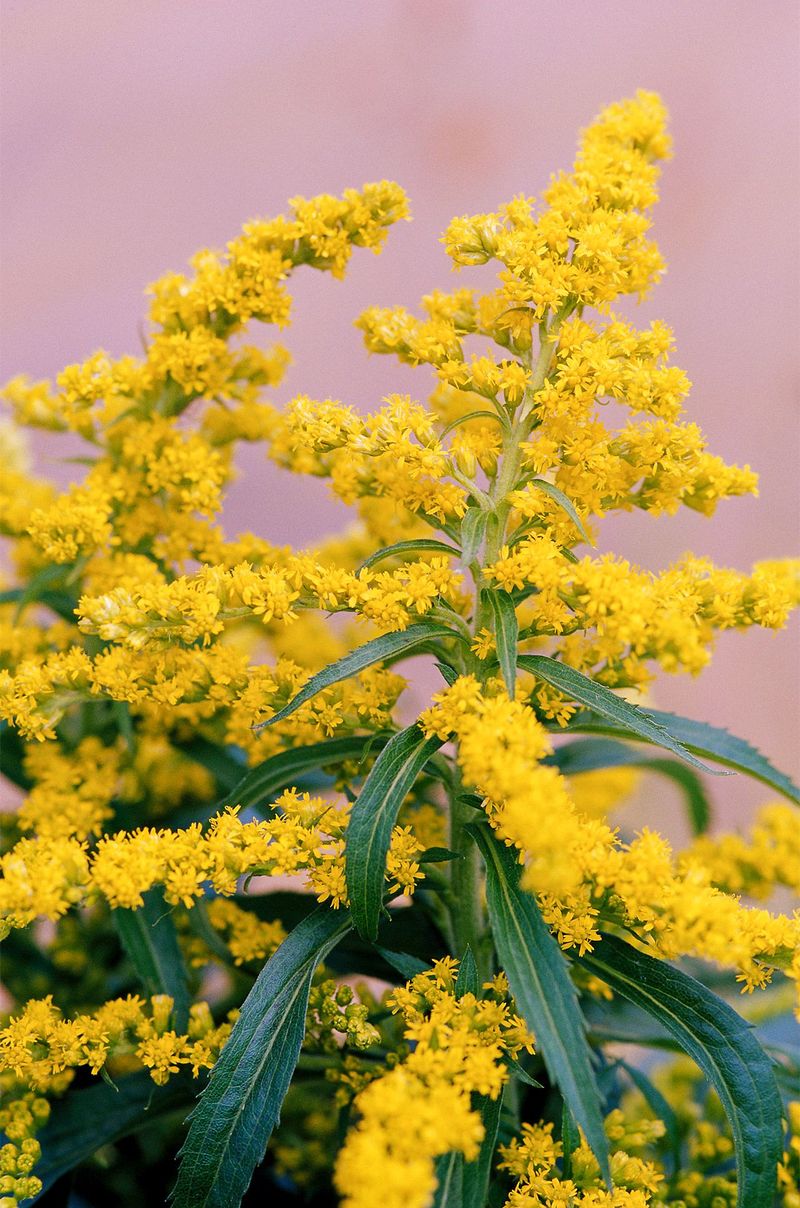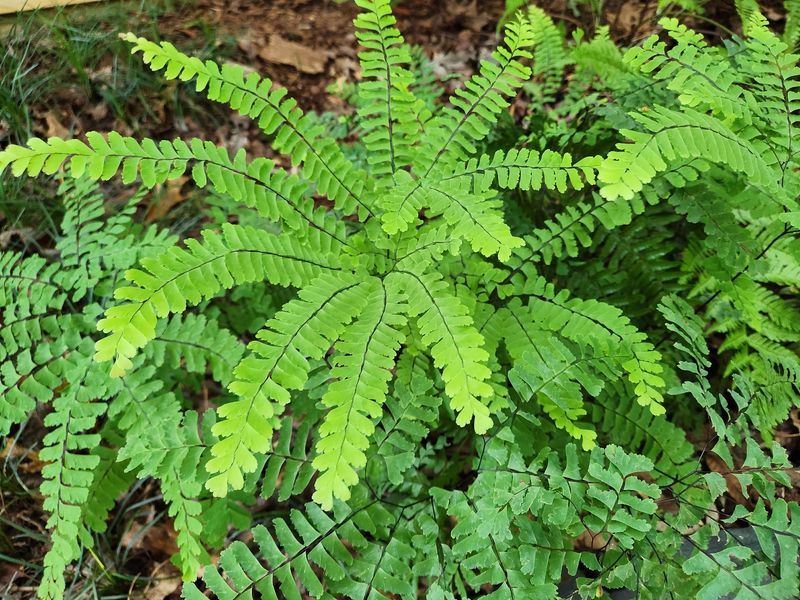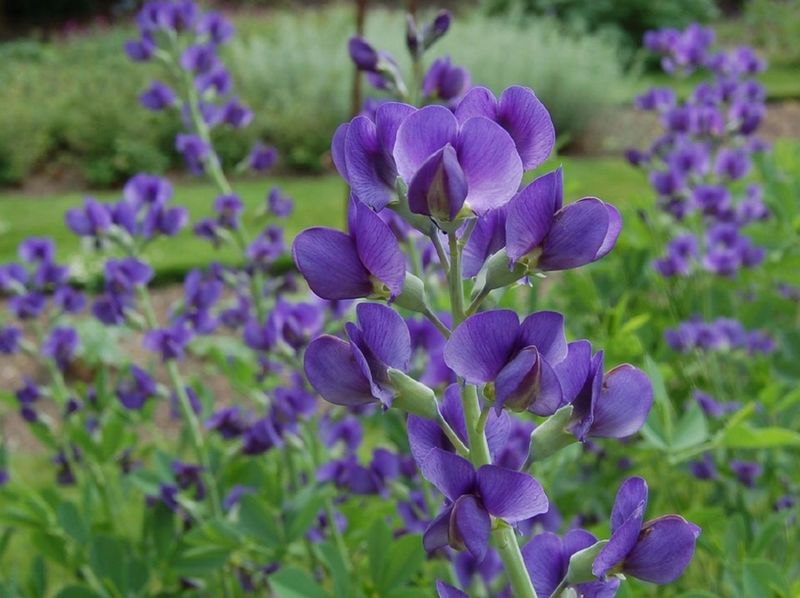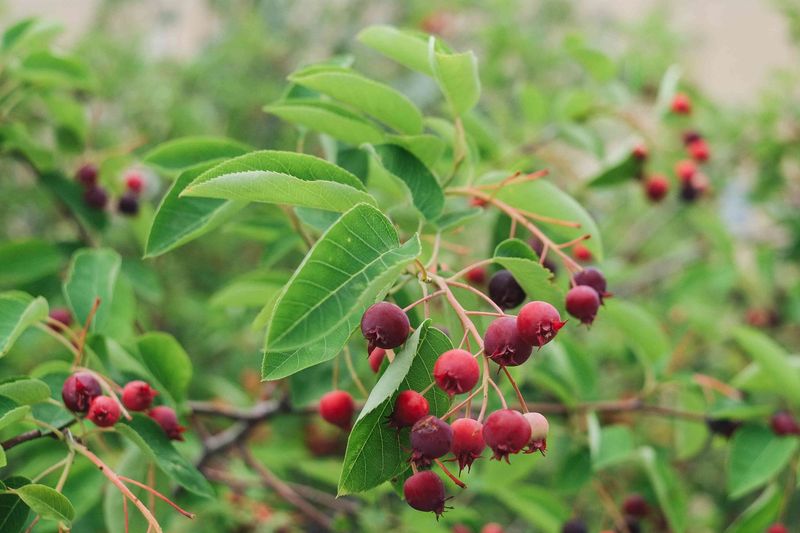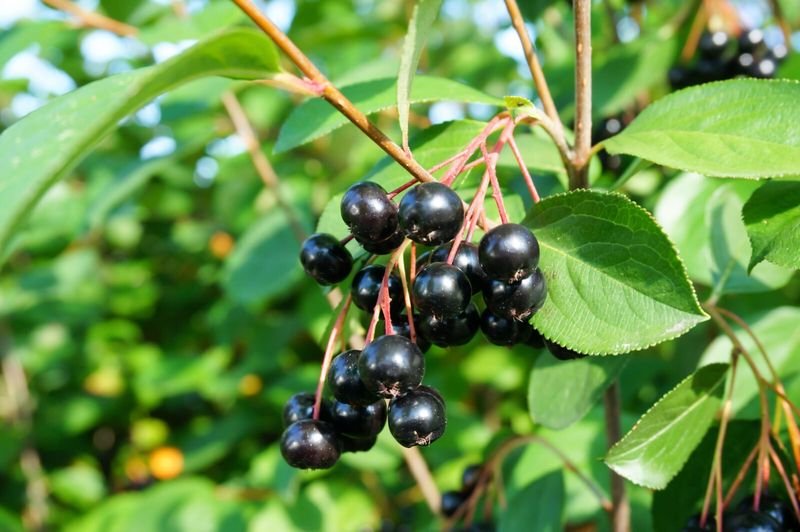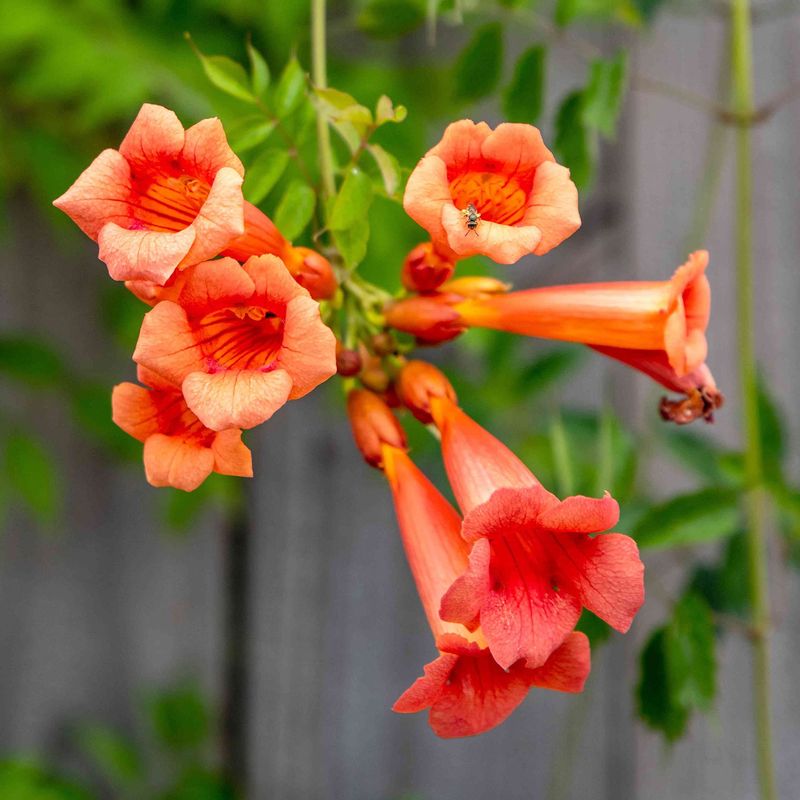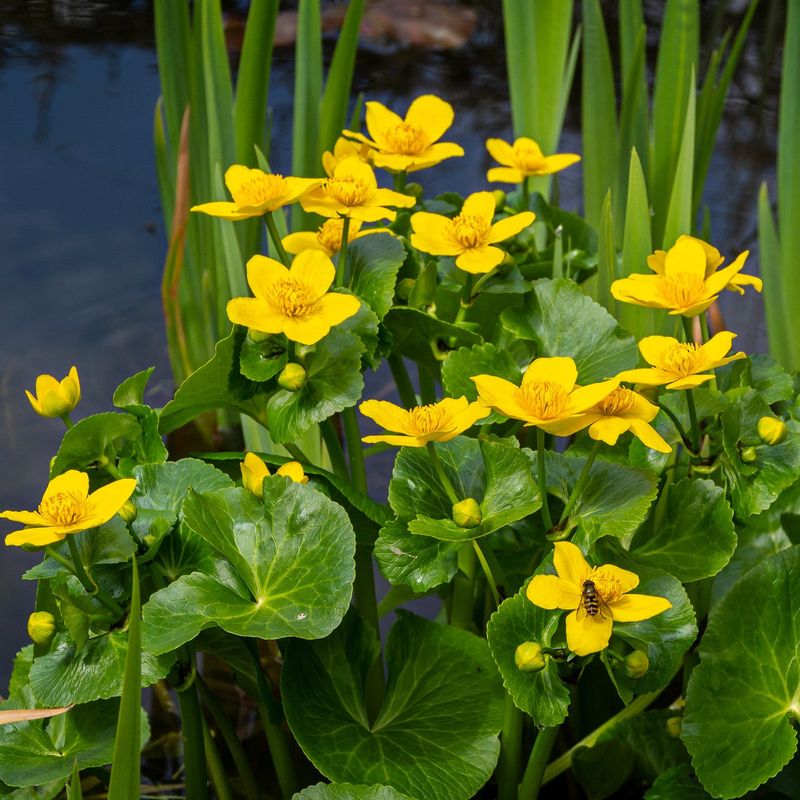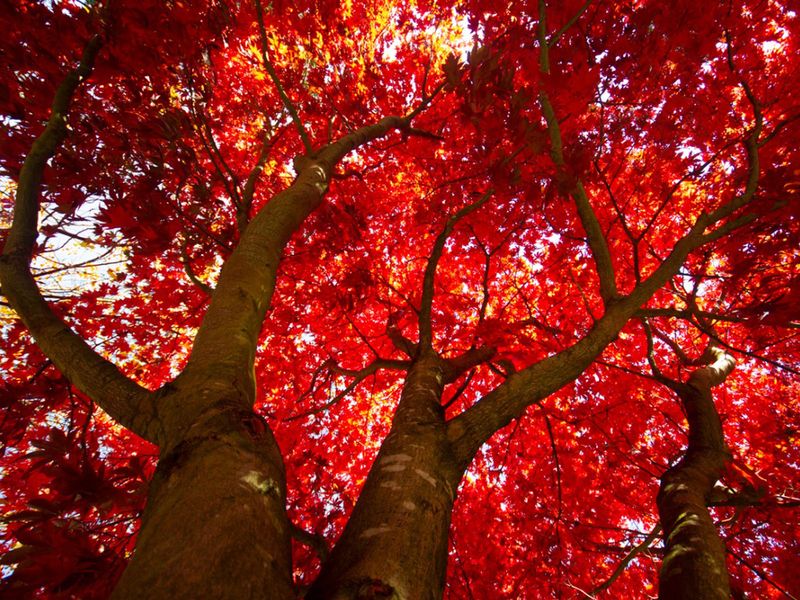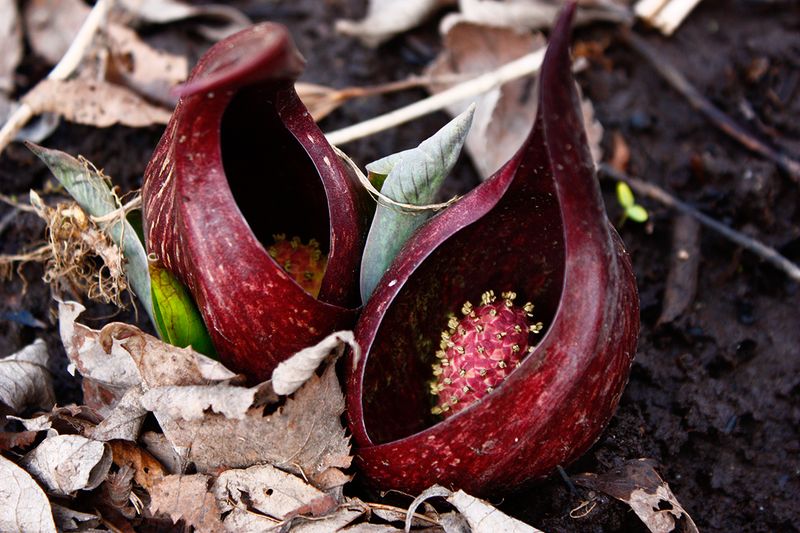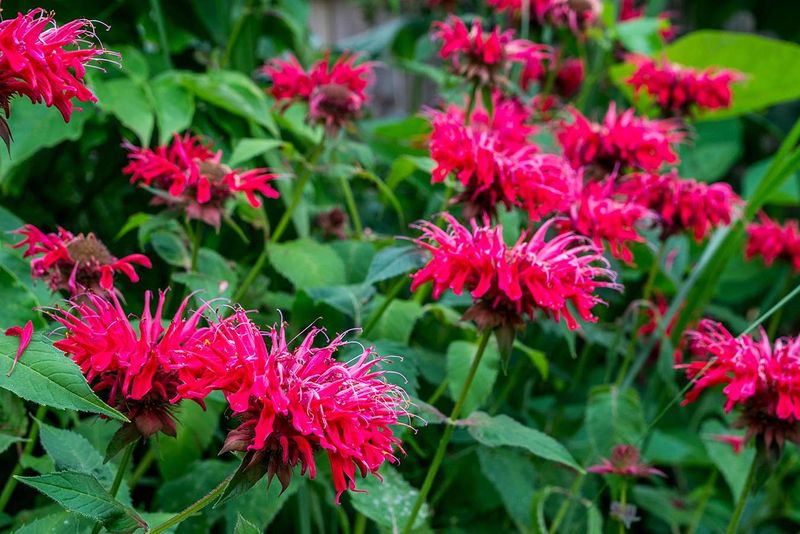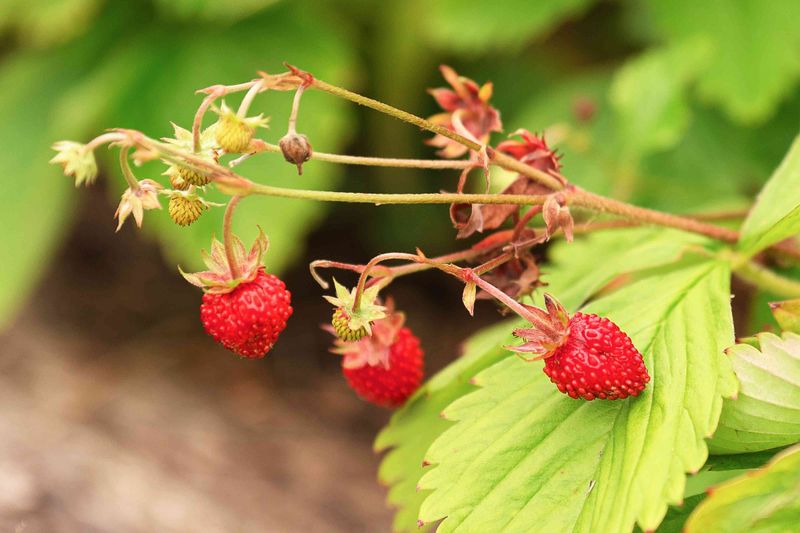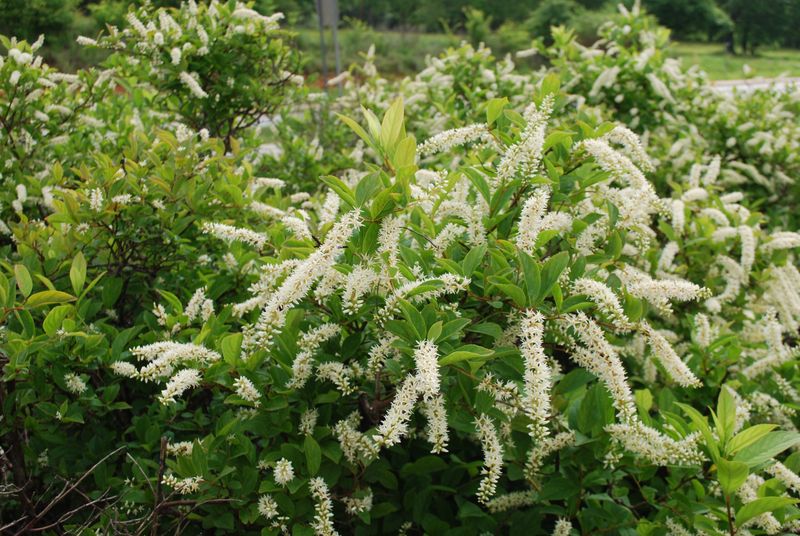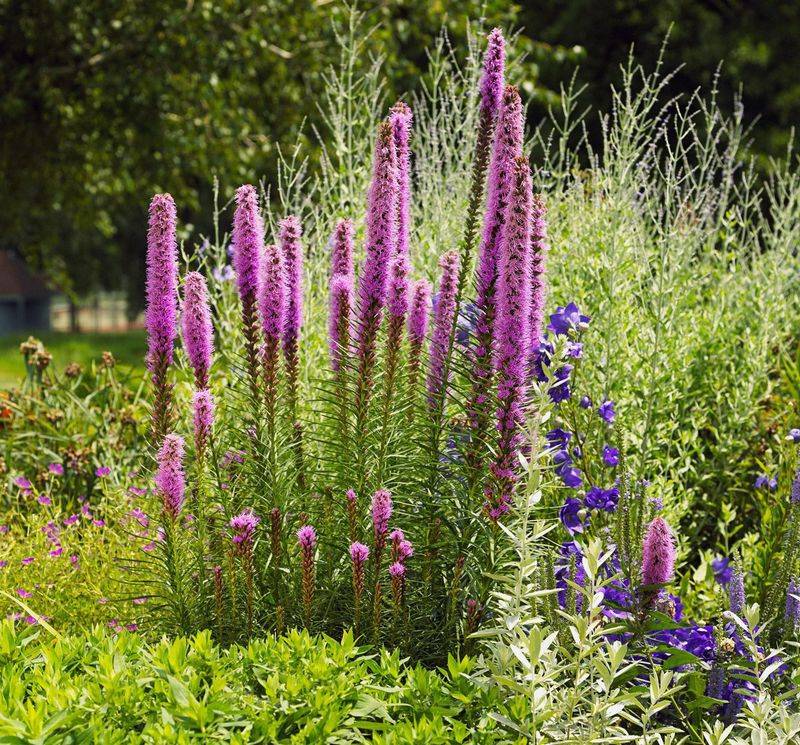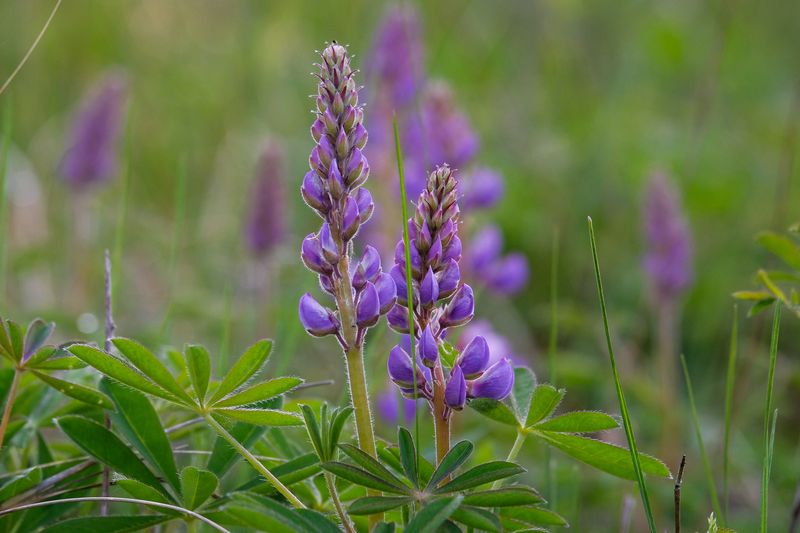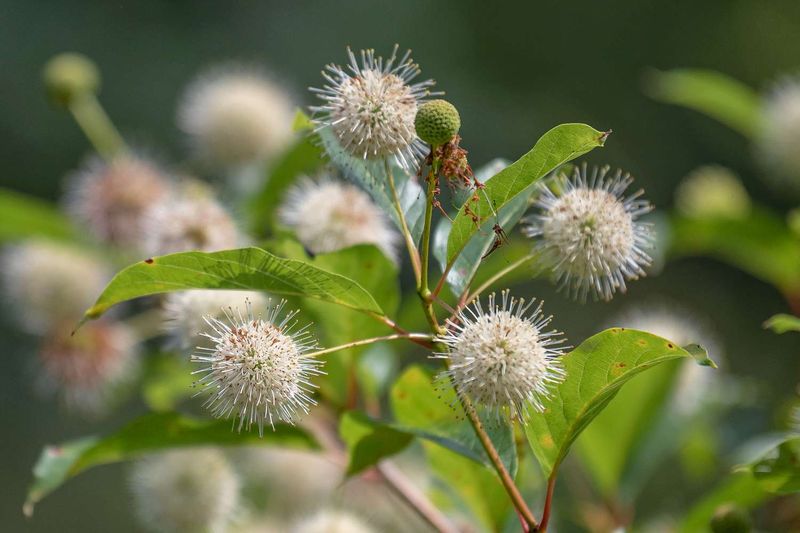As I’ve ventured deeper into gardening, I’ve discovered that there’s something truly magical about native plants. They’re not just beautiful; they’re like the quiet, unsung heroes of American gardens.
Each one has its own story of survival, adaptation, and flair. I remember planting a wildflower and being amazed at how it just thrived without much fuss.
Whether you’re a seasoned pro or just dipping your toes into gardening, these plants offer a simple yet stunning way to bring nature’s charm into your space. You’ll be hooked in no time!
1. Eastern Redbud
Springtime paints the landscape with unexpected hues. The Eastern Redbud unveils its pink blossoms, a glorious spectacle against bare branches.
These heart-shaped leaves emerge as the flowers fade. Native to forests and thickets, it brings life to gardens with its display. Often mistaken for a cherry blossom, its charm lies in simplicity.
Perfect for small spaces, it offers shade and beauty. The Redbud’s understated elegance makes it a favorite among garden enthusiasts.
2. Purple Coneflower
In the midst of summer’s warmth, one flower stands tall. The Purple Coneflower, known for its resilience, attracts both bees and admirers.
Its spiky pink petals encircle an orange cone, creating a stunning contrast. Found in prairies and meadows, it’s a staple in American gardens.
This plant not only beautifies but also supports local wildlife. It’s an easy-care perennial, making it ideal for gardeners seeking minimal maintenance. Its presence ensures a lively garden atmosphere.
3. Black-Eyed Susan
The Black-Eyed Susan brings warmth to any garden. Originally from North American fields, it’s a symbol of charm and endurance.
This daisy-like flower is both hardy and easy to grow. It flourishes in varying conditions, from roadsides to backyard plots.
An emblem of the summer season, it continues to bloom even as leaves begin to fall. Perfect for borders, it complements other perennials beautifully.
4. American Holly
Winter brings a splash of color amidst the monochrome landscape. The American Holly stands resilient, its leaves and red berries offering contrast.
This evergreen’s historical roots run deep in American culture. Its dense foliage provides shelter for birds, while the berries feed them. Ideal as a privacy screen, it’s both ornamental and functional.
With a distinctive festive look, it graces homes during the holiday season. Its timeless beauty remains unmatched year-round.
5. Common Sunflower
Known for their height, these flowers symbolize positivity and strength. Native to prairies and open fields, they’re a gardener’s delight.
I remember planting them last year, and watching them grow taller than I could imagine, making my garden feel like a mini sunflower field. Their seeds offer nourishment to wildlife and humans alike.
They are easy to cultivate and bring joy to any setting. As summer fades, their golden heads bow, leaving behind a legacy of warmth and cheer.
6. Wild Columbine
In shaded woodlands, a dainty blossom sways. The Wild Columbine captures the imagination. Its intricate design attracts hummingbirds and garden admirers.
Native to rocky terrains, it adapts well to gardens. This perennial adds a touch of elegance to shaded corners. It’s a low-maintenance plant, perfect for those seeking beauty with ease.
Despite its fragile appearance, it’s a tough survivor in the wild. Its presence in the garden is both unexpected and delightful.
7. Butterfly Milkweed
Amidst tall grasses, a fiery shade emerges. The Butterfly Milkweed, with its bright orange clusters, draws in monarchs and other butterflies.
Known for its role in supporting pollinators, it’s essential in ecological gardens. This perennial thrives in sunny spots, adding bursts of color. It’s both a spectacle and a sanctuary for wildlife.
Easy to grow, it requires little attention once established. As the seasons change, its beauty remains a focal point. A garden favorite for its attractiveness and ecological value.
8. Blueberry Bush
Ripening in the warm months, nature’s candy awaits. The Blueberry Bush is a gardener’s delight. Beyond its delicious berries, it provides visual interest throughout the seasons.
This native shrub is both ornamental and functional. Perfect for edible landscapes, it’s easy to cultivate in acidic soils.
The foliage turns crimson in autumn, adding seasonal color. Its berries attract birds and wildlife, creating a lively garden environment. A true testament to nature’s bounty and versatility.
9. Switchgrass
Graceful stalks dance in the breeze. Switchgrass, a prairie staple, stands tall and elegant. Known for its resilience, it thrives in diverse conditions.
This ornamental grass is perfect for creating movement in gardens. Its feathery seed heads add texture and interest. A favorite among landscapers, it’s both drought-tolerant and low-maintenance.
As seasons shift, its colors transition, offering year-round allure. Ideal for naturalizing spaces, it supports local ecosystems. Switchgrass embodies the spirit of the American prairie.
10. Prairie Dropseed
In the golden light of dusk, textures come to life. Prairie Dropseed offers a soft appearance. Its fragrant seed heads are a delightful surprise.
This grass adds elegance to any garden setting. Native to prairies, it’s valued for its hardiness and adaptability. It grows in clumps, making it ideal for borders or mass plantings.
Low-maintenance and drought-resistant, it’s a landscaper’s dream. As autumn arrives, its foliage turns orange, adding seasonal warmth. A testament to subtle beauty in nature.
11. American Beautyberry
Amidst the greenery, unexpected hues appear. The American Beautyberry, with its purple clusters, stands out in nature’s palette.
This shrub offers more than just visuals. It’s a source of food for birds and other wildlife. Native to woodlands, it adapts well to garden settings.
Easy to grow, it thrives in a variety of conditions. As autumn approaches, its berries offer a pop of color. A favorite for those seeking beauty with purpose.
12. Cardinal Flower
In wetlands, a spire rises. The Cardinal Flower, with its fiery blooms, captures attention effortlessly. Known for attracting hummingbirds, it’s a pollinator’s paradise.
This perennial thrives in moist soils, making it ideal for water gardens. It’s a bold statement plant, perfect for adding height and color. Despite its showy appearance, it requires minimal care.
As the season progresses, its blooms remain a garden highlight. A beloved addition, offering both beauty and ecological benefits.
13. Yarrow
In a meadow filled with whispers of the past, a sturdy bloom stands firm. Yarrow, known for its medicinal properties, has a storied history in herbal medicine.
Its clusters of white flowers and fern-like leaves add a touch of elegance to any setting. This resilient perennial thrives in poor soils and full sun, making it a favorite among low-maintenance gardeners.
As blooms persist, it becomes a haven for beneficial insects, enhancing biodiversity. Yarrow is a timeless garden companion, blending beauty with utility.
14. New England Aster
As autumn’s chill sets in, a splash of color defies the season’s fade. The New England Aster, with its purple blooms, stands out against falling leaves.
I planted a few last year, and I was amazed at how they brightened up my garden as the other flowers faded. A favorite of late-season pollinators, it provides much-needed nectar as other flowers retreat.
This perennial is a staple in fall gardens, offering a burst of color when most plants are winding down. Its nature ensures it will return year after year, delighting gardeners and supporting local wildlife. .
15. Wild Geranium
In the dappled light of a woodland garden, an understated bloom emerges. The Wild Geranium, with its delicate pinkish-purple petals, brings a touch of grace to shaded areas.
Its foliage remains lush throughout the growing season, providing a verdant backdrop even after the flowers have faded. This native perennial is easy to care for, thriving in partial shade and well-drained soil.
It’s a perfect choice for those looking to add subtle beauty without overwhelming their garden space. The Wild Geranium’s quiet elegance makes it a treasured addition to any landscape.
16. Coral Bells
Along a winding garden path, a splash of unexpected color catches the eye. Coral Bells, known for their striking foliage, offer a unique play of colors with leaves in shades of pink, purple, and green.
These perennials thrive in shaded or partially shaded areas, making them ideal for adding interest to less sunny spots. Their bell-shaped flowers attract hummingbirds, providing added life to your garden.
Easy to maintain, Coral Bells are a favorite for those seeking color without the fuss. Their presence enhances any garden setting, creating a tapestry of natural beauty.
17. Virginia Bluebells
In the early days of spring, a gentle transformation occurs. Virginia Bluebells herald the arrival of the season.
These perennials thrive in woodland gardens, where they naturalize beautifully, creating a carpet of color. As temperatures rise, the flowers gradually turn pink, adding a dynamic display to the landscape.
Their ephemeral nature may seem fleeting, but the joy they bring is lasting. Virginia Bluebells are a gardener’s delight, blending with other spring blooms to create a harmonious garden symphony.
18. Sweetgum Tree
Beneath a canopy of star-shaped leaves, a story of transformation unfolds. The Sweetgum Tree offers a visual treat year-round.
In autumn, its leaves turn brilliant shades of red, orange, and purple, creating a stunning display. The tree’s unique spiky seed pods add texture and interest to the landscape.
This native hardwood is valued for its resilience and adaptability, making it a popular choice for parks and large gardens.
19. Jack-in-the-Pulpit
In the cool shadows of a woodland garden, a curious plant emerges. Jack-in-the-Pulpit, with its hooded flowers, adds an air of mystery to the landscape.
This perennial thrives in moist soils, where its intriguing blooms capture the imagination. As summer progresses, red berries make their appearance, offering a contrast against the plant’s green foliage.
Jack-in-the-Pulpit is a favorite among gardeners looking to add an element of surprise to their shaded areas. Its form and berries ensure it remains a focal point throughout the growing season.
20. Mountain Laurel
In the mountain’s embrace, a floral display of elegance unfolds. Mountain Laurel, with its clusters of pink and white flowers, brings refined beauty to any setting.
This evergreen shrub thrives in well-drained soils, making it ideal for woodland or rock gardens. Its foliage provides year-round interest, while the blooms add grace in late spring.
Mountain Laurel is both a symbol of strength and beauty, capable of withstanding harsh conditions while offering visual delight.
21. Ninebark
Beside the still waters of a garden pond, an intriguing shrub takes center stage. Ninebark adds texture and interest to the landscape.
This native plant is known for its hardiness and adaptability, thriving in a variety of conditions. Its name comes from the multiple layers of bark that peel away, revealing different colors beneath.
Ninebark is a versatile shrub, perfect for creating natural screens or adding structure to mixed borders. Its appearance and resilience make it a garden favorite, providing year-round appeal.
22. Elderberry
In a sun-drenched meadow, a bounty of nature awaits. The Elderberry bush transforms into a feast of dark purple berries.
This fast-growing shrub is valued for its culinary and medicinal uses, offering a taste of the wild right in your garden. Elderberries attract wildlife, providing food for birds and small mammals.
Its easy-going nature and adaptability make it a perfect choice for hedgerows or naturalized plantings. Whether for its beauty or bounty, the Elderberry is a versatile addition to any landscape.
23. Spicebush
In the quiet corners of a woodland garden, subtle fragrances come alive. Spicebush adds sensory delight to the landscape.
This native shrub thrives in moist, shaded areas, where its leaves and stems offer a hint of spice. The berries provide nourishment for birds, while the flowers attract early pollinators.
Spicebush is a versatile plant, ideal for naturalized settings or mixed borders. Its understated beauty and ecological benefits make it a cherished addition for gardeners seeking harmony with nature.
24. Goldenrod
In the warm glow of late summer, a burst of color graces the meadow. Goldenrod, with its tall yellow flower spikes, stands as a beacon in the landscape.
This native perennial is often misunderstood but plays a vital role in supporting pollinators, providing a late-season nectar source.
Its robust nature allows it to thrive in a variety of conditions, making it a valuable addition to naturalized areas or sunny borders.
25. Maidenhair Fern
In the cool shade of a forest, a touch of elegance unfurls. Maidenhair Fern adds grace and texture to any garden setting.
This native fern thrives in moist, shaded environments, where its intricate foliage creates a lush, green backdrop.
Its unique form and lightness make it a favorite among gardeners looking to add movement and softness to their landscapes.
26. Wild Indigo
In the bright light of a summer’s day, splashes of color emerge. Wild Indigo brings freshness to garden borders. I planted it last season, and I loved how it popped against the greenery.
This native perennial is known for its hardiness and adaptability, thriving in sunny soils. Its foliage and blooms make it a favorite for adding contrast and interest to mixed plantings.
Wild Indigo also provides ecological benefits, supporting pollinators and enriching the soil through nitrogen fixation. Its nature and color ensure it remains a standout feature in any garden.
27. Serviceberry
In the gentle warmth of spring, a floral show begins. The Serviceberry tree heralds the season’s arrival. This native tree is valued for its year-round interest, offering beautiful flowers, berries, and fall foliage.
Serviceberries attract a variety of wildlife, providing food and habitat for birds and pollinators. Its adaptability makes it suitable for a range of garden settings, from small urban yards to larger landscapes.
Whether for its beauty or bounty, the Serviceberry is a versatile and cherished addition to any garden.
28. Black Chokeberry
In a mixed garden border, unexpected treasures await. Black Chokeberry offers more than just visual appeal. This native shrub is known for its adaptability, thriving in a variety of conditions.
Its glossy green leaves turn brilliant red in the fall, providing a seasonal display. Black Chokeberries are rich in antioxidants, making them a valuable addition to edible landscapes.
Their resilience and beauty ensure they remain a favorite among gardeners seeking plants with both ornamental and practical applications.
29. Trumpet Vine
Along a garden trellis, a bold display of color takes center stage. The Trumpet Vine captures the eye and attracts hummingbirds.
This vigorous climber is known for its rapid growth and ability to cover structures quickly. It’s an ideal choice for adding vertical interest to gardens, creating green walls adorned with blooms.
Trumpet Vine’s hardiness and adaptability make it a popular choice for gardeners looking to add drama and wildlife interest to their outdoor spaces.
30. Marsh Marigold
In the heart of wetland areas, a cheerful presence emerges. Marsh Marigold brings sunshine to the landscape even on gloomy days.
This native perennial thrives in damp conditions, where its vivid blooms add a splash of color to pond edges and wet garden spots.
Marsh Marigold’s early spring arrival provides vital nectar for pollinators, making it an important ecological component.
31. Red Maple
In the crisp air of autumn, a brilliant display unfolds. The Red Maple transforms the landscape into a tapestry of color.
This tree is a popular choice for parks and large gardens. Its striking fall foliage and graceful form provide year-round interest, offering shade in the summer and visual delight in the cooler months.
Red Maple’s resilience and beauty make it a favored choice for those looking to add a touch of autumn magic to their outdoor spaces.
32. Skunk Cabbage
In the shaded corners of a wetland, a peculiar plant emerges. Skunk Cabbage adds intrigue to the landscape.
This native plant provides a much-needed food source for early pollinators. Its appearance and ability to grow in damp conditions make it a fascinating addition to shady garden areas.
Skunk Cabbage’s resilience and ecological importance ensure it remains a valued component of wetland gardens, offering both beauty and biodiversity to naturalized settings.
33. Bee Balm
In the sunlit corners of a garden, a lively spectacle unfolds. This native perennial is known for its foliage and blooms, making it a favorite among gardeners looking to attract bees, butterflies, and hummingbirds.
Bee Balm’s easy-going nature and adaptability make it suitable for a range of garden conditions, from formal beds to naturalized wildflower areas.
Its cheerful presence adds both color and life to outdoor spaces, ensuring it remains a cherished garden staple.
34. Wild Strawberry
In the soft light of dawn, a tiny treasure awaits discovery. Wild Strawberry plants offer a taste of the wild right in your garden.
These low-growing perennials are perfect for ground cover, providing both beauty and bounty in sunny spots. Wild Strawberries are known for their sweet, juicy fruit, which attracts birds and small animals.
Their easy-going nature and adaptability make them a popular choice for gardeners looking to create naturalized, edible landscapes.
35. Sweetspire
This native shrub thrives in a variety of conditions, from full sun to deep shade, making it a versatile choice for gardeners seeking low-maintenance beauty.
Sweetspire’s blooms attract pollinators, while its fall foliage provides a stunning display of red, orange, and yellow hues.
Its adaptability and charm make it a favorite for those looking to add both fragrance and color to their outdoor spaces.
36. Blazing Star
Blazing Star adds drama and height to the landscape. This native perennial is known for attracting butterflies and other pollinators, making it an essential component of any wildlife-friendly garden.
Its striking form and blooms provide a focal point in mixed borders or naturalized plantings.
Blazing Star’s hardiness and adaptability make it suitable for a range of garden conditions, ensuring it remains a favorite for those looking to add both beauty and biodiversity to their outdoor spaces.
37. Wild Lupine
Wild Lupine brings an enchanting touch to the landscape. This native perennial is valued for its ability to thrive in sandy, well-drained soils, where it provides essential nectar for pollinators.
Lupines fix nitrogen in the soil, improving conditions for neighboring plants, making them a beneficial addition to any garden.
Their tall flower spikes and lush foliage create a stunning display, ensuring Wild Lupine remains a cherished part of any naturalized planting.
38. Buttonbush
This native shrub thrives in wet conditions, making it ideal for water gardens or pond edges. Its unique flowers attract a variety of pollinators, providing valuable habitat and food sources.
Buttonbush’s adaptability and resilience make it a popular choice for gardeners looking to create lush, naturalized settings.
Its intriguing form and ecological benefits ensure it remains a standout feature in any garden design.

